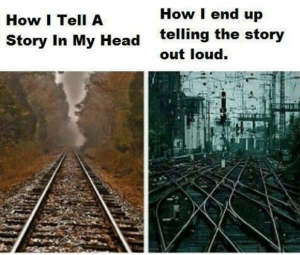
Image courtesy of Stuart Miles at FreeDigitalPhotos.net
Oh, good grief.
Why do I have a prologue for a short story? No – oh, no – why are there prologues for three short stories in this collection someone is trying to sell my publisher – and the fourth short story has a flashback? Do you not understand how short stories work? …. What prologues are for?
I get it. Fantasies have prologues, but not.every.single.time. Especially in a short format where laser focus is needed. Just because (fill in the blank, famous-and-now-dead high fantasy author) used prologues back in their day, does not mean you get to use them now.
Well, this one is an easy decision. My publisher hates prologues. Unless there is a great reason to have it – and I have seen them used properly once in a hundred uses – the submission is a reject. Only six more to read today. (Yes, I want to accept submissions, but I have two slots this year and a hundred submissions. Bad prologues go into the “no” pile.)
For the most part, what I was seeing are prologues used as a big info backstory dumps for lazy writers who can’t figure out how to integrate backstory into the narration (I’ve touched on how to do backstory integration elsewhere). That said, if done right, providing a hint to the story which raises questions instead of just answering questions which haven’t been asked yet, prologues are useful. One example I read was a beautiful pre-story explaining something that affected every decision the point-of-view (POV) character made, but she did not know how this childhood event changed her as a person. The reader sees it, but the POV character doesn’t know and cannot know and therefore cannot share it in the primary narration.
Another good use of prologues is in murder mysteries where you meet the victim and witness the event of the murder before the detective character shows up. In both this case and the previous case, the camera through which we are witlessness the main story does not have access to the information. Also in both cases, the prologue was written like part of the story – action-oriented. In the info dump case, the long history of everything which went before on the fantasy world told by a historian is BORING, and often irrelevant to the story. I love worldbuilding, but not reading it dry. I didn’t like dates and places in history class when I was in school, and I don’t like them now. I do love history though and have been part of a recreation hands-on group for years.
So don’t do info dumps – not for prologues and certainly not in short stories. You might need to write them up during the first draft, but remove them and set them aside during the second draft.
I’ll close with an exchange I had with some editors.
***
Erin Penn: I’ve never realized just how bad prolog-itis is until I started reading slush.
Editor One: LOL
Editor Two: It is an epidemic.
Erin Penn: Affecting over 50% of the population.
Editor Two: We need a vaccine.
Editor Three: It’s particularly virulent in fantasy authors…
Editor Four: And like most bugbears of writing, the infestation of bad ones ruin the possibility for a really good one. Because it is possible to have a good prologue, but almost nobody does.
People want to dump all that exposition in early so they don’t have to worry about it any more – they want the Star Wars opening crawl through space. The thing is, if they can just restrain themselves, they DON’T have to worry about it. If the story matches the exposition, the exposition will come out as the story unfolds.
Erin Penn: Stealing for a some-day blog post!




